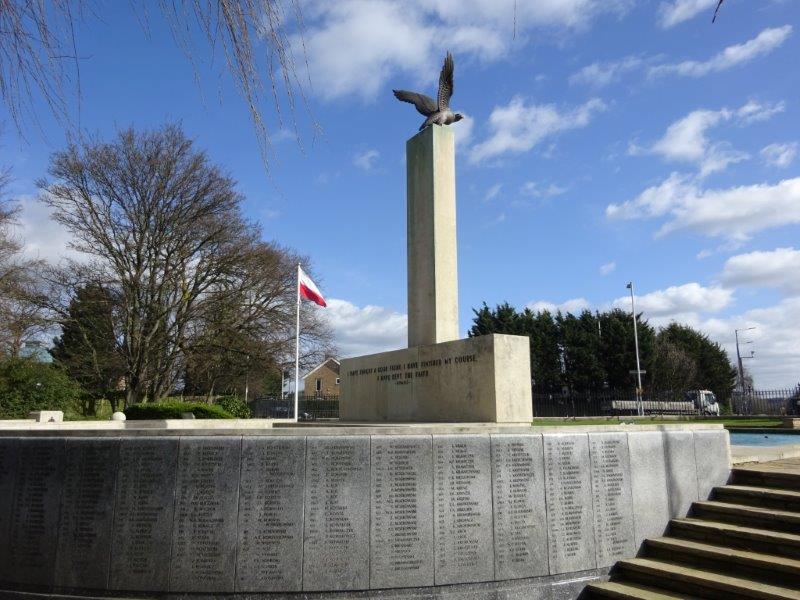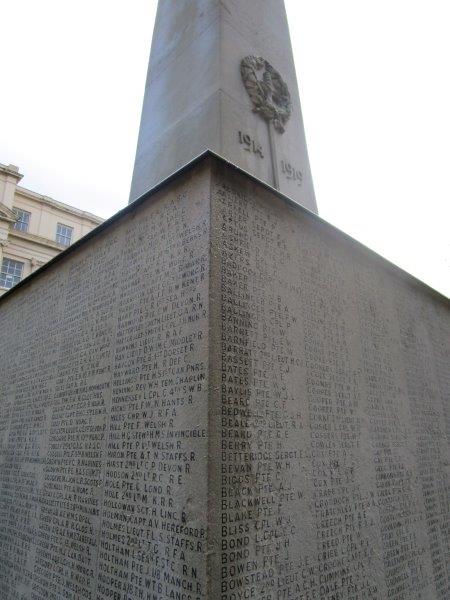How to research a war memorial
 Preserving our war memorial heritage ensures that sacrifices and events are not forgotten. Frances
Moreton, of the War Memorials Trust, offers some tips for researching the stories
behind them.
Preserving our war memorial heritage ensures that sacrifices and events are not forgotten. Frances
Moreton, of the War Memorials Trust, offers some tips for researching the stories
behind them.
War memorials are a common feature of our landscapes. Each is unique and represents a community’s chosen method of remembrance, whether it be a cenotaph, plaque, cross, stained-glass window, clock, lighthouse, bus shelter or hospital. The names on a war memorial may not be found anywhere else, making preservation vital.
In the UK, there are war memorials to conflicts going back to the 7th century, but it was the Crimean and Boer wars that saw increased recognition of the common soldier. After World War 1, a vast outpouring of public grief led to the creation of two thirds of the UK’s estimated 100,000 war memorials. After World War 2, names were often added to the earlier memorial or more utilitarian forms adopted such as halls, hospitals and shelters.
Since World War 2, repatriation of bodies became more common, creating a different relationship to our war memorials. For the fallen of the two world wars, and earlier, the war memorial is, for their families and friends, their grave – a place to mourn at a time when a visit to an overseas burial would not have been possible.
Preserving our war memorial heritage is vital to ensure that sacrifices are not forgotten and the events in which those remembered participated are recognised. Educating younger people about war memorials is important to ensure that tomorrow’s custodians understand what they represent and continue to conserve them.
Often, people are unaware when undertaking works of the importance of appropriate repair and conservation methods to minimise damage. Ensuring any work on a war memorial follows best conservation practice gives war memorials the greatest chance of surviving intact for future generations.
Researching the stories behind the memorials
One way of engaging everyone to ensure the preservation of our war memorials is to research and share the stories behind the objects, and those that they remember.
Not all war memorials have names inscribed on them, but these often have accompanying rolls of honour or books held nearby. On some occasions, communities choose not to include the names, and this is just one of the ways we are reminded of how war memorials are all different. They were erected by a community – geographical, workplace, religious or educational – who made their own decisions. There were no national guidelines or instructions; understanding and respecting those choices is an important part of caring for our war memorial heritage.
When researching a war memorial, information will vary considerably. If you are looking at the physical object, you might want to uncover who built it, who funded it, why it is located where it is and who the people involved in the decisions were. Minutes of original committee meetings may be available and depending on the site of the memorial, you might try council, parochial church council, school board or company records.
Local newspapers often cover the story of a memorial with dedication services featuring prominently, so reviewing publications can often help to identify important details, as well as background on those recorded on the memorial.
Challenges you’ll probably face
Investigating the stories of the commemorated is fascinating, but it  can be challenging. There are no rules as to who is recorded on a war memorial, why
or how. Communities selected names in different ways; some had criteria related to
birthplace, association or connection with a community, while others just collected
names without further consideration.
can be challenging. There are no rules as to who is recorded on a war memorial, why
or how. Communities selected names in different ways; some had criteria related to
birthplace, association or connection with a community, while others just collected
names without further consideration.
Today, it can be difficult to understand, but many families did not want their loved ones included on a memorial. Some were still officially missing, and that final act of recognising loss was not something that families were always ready to accept.
Names can also appear on unexpected memorials, as families may have chosen locations they felt appropriate – a husband may have moved to his wife’s village to live, but she may have felt his name should go on the memorial where he was born, alongside his friends and family.
Geography also plays an important part when looking at names. What were villages in the 1920s may now be part of a larger town, so it is important to check all the local memorials when looking at names, as an individual is likely to be close to home. Research projects can suggest names missing or lacking from a war memorial, but it is important to understand what the criteria were and why decisions were made, before suggesting a change to history – if the community was happy with the names at the time, we should be cautious about suggesting errors or omissions.
When researching the people connected with a war memorial, the Commonwealth War Graves Commission Debt of Honour is a good starting point. Regimental records alongside those from the census, local archives and parish registers can add details about individuals, their service and their life. Contacting local history groups or getting an article in the local press can often generate very personal stories, images and background about individuals, helping connect today’s communities to their war memorials. It can also lead to the publication of book or exhibitions and community events that demonstrate that ‘we will remember’.
About the author
Frances Moreton is the director of War Memorials Trust.
War Memorials Trust works to protect and conserve war memorials across the UK. The conservation charity gives grants to support repair and conservation projects, as well as providing free advice and guidance on all sorts of war memorial issues. It also runs a learning programme seeking to engage young people with war memorials, ensuring that they will continue to preserve this unique aspects of our shared national heritage in the future.
For more information, visit www.warmemorials.org.
Pictured: Polish Air Force memorial at Northolt, © War Memorials Trust; and a Cheltenham war memorial after recent works, © War Memorials Trust
